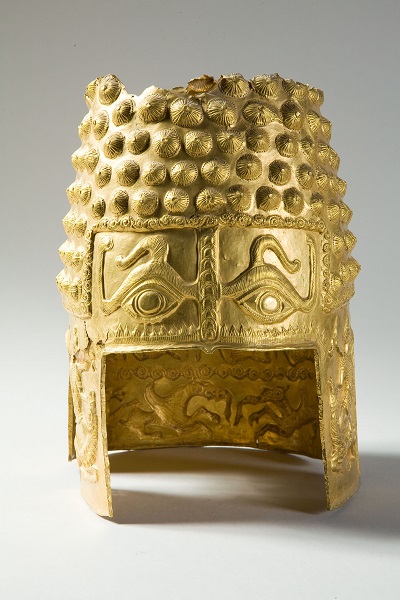Empire of gold and silver
From 7 July 2024, the Drents Museum will present the major archaeology exhibition Dacia - Empire of gold and silver. More than fifty gold and silver treasures from Romania from the 20th century BC to the 3rd century AD are coming to Assen. Most of them date from the period before the Roman conquest (106 AD). With Dacia, the Drents Museum tells the story of the Dacians, one of the 'forgotten peoples' of world history. The exhibition can be seen in the Drents Museum until 26 January 2025.
In the 2nd century BC, the Dacians inhabited much of present-day Romania, Dacia. The unique geographical location - between the Eurasian steppe to the east, the Mediterranean world to the south and Central Europe to the west - made the area a crossroads of cultures. Greeks, Celts, Thracians, Scythians and Persians all had their influence on the Dacians, and elements of these different cultures can therefore be found in the objects. The Romans also took a great interest in Dacia. They devoted two battles to it before finally conquering the warlike people in 106 AD. In Dacia - Empire of gold and silver, the museum concentrates on the period before this conquest. The focus is on the identity of the Dacians and the impressive gold and silver treasures.
Gold and silver
The wealth of natural resources ensured that Romania has traditionally had an important function. Thanks to the presence of gold mines, the inhabitants of Dacia achieved a very high level of precious metals processing, both technically and artistically. The objects were used during religious rituals or were offered, such as the solid gold bracelets from Sarmizegetusa Regia, then the capital of the Dacian empire. Some of the gold and silver treasures have been discovered in recent years and have never before been displayed in a museum.
Objects from Romanian museums
The more than 500 objects of gold and silver treasures come from at least 15 different museums across Romania. For the exhibition, the Drents Museum is collaborating with the National History Museum of Romania. Director Dr Ernest Öberlander-Târnoveanu is guest curator of Dacia.
Dacia - Empire of gold and silver can be seen from 7 July 2024 to 26 January 2025 and is part of the series of exhibitions on international archaeology, such as Iran - Cradle of Civilisation (2018), Under the spell of Mount Ararat - Treasures from ancient Armenia (2022) and Dying in beauty – The world of Pompeii and Herculaneum (2022). The exhibition will be accompanied by an in-depth publication with contributions from various Romanian archaeologists.


Captions
- Helmet of Coțofenești, 4th century BC, National History Museum of Romania. Photo: Ing. Marius Amarie
- Rhyton Poroina Mare, late 4th century BC - early 3rd century BC, National History Museum of Romania. Photo: Ing. Marius Amarie





